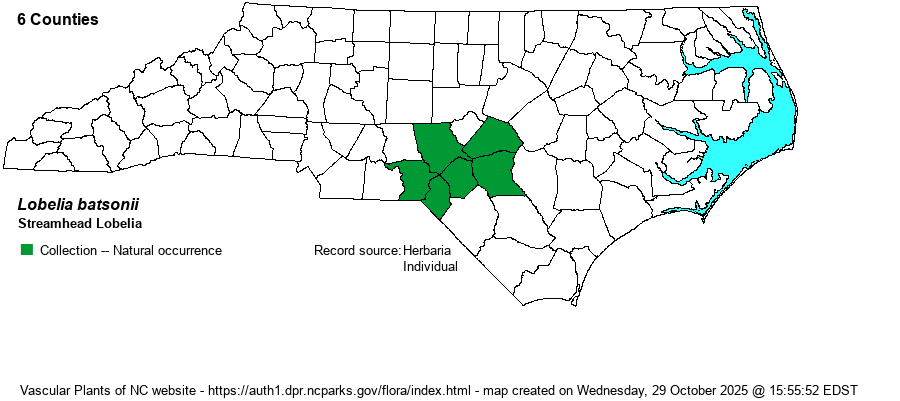| Identification | This is one of several wetland species of Lobelia that are quite similar, and thus you must take care in the identification. These species are fairly tall, growing as an erect herb to 2 feet tall, rarely to 3 feet tall, usually unbranched. They have numerous alternate stem leaves. In this species, each leaf is very narrow, essentially linear, 3-4 inches long but usually about 1/5-inch wide, with serrated margins. The top 3-5 inches of the stem is a raceme of widely scattered flowers, relatively few, and secund (on one side of the stem), each of which is violet-blue to medium blue. The flower is about 2/3-3/4-inch long, tubular and with two lips, the lower with three lobes and extending far beyond the two small upper lobes. It occurs in the same area with several others in the Coastal Plain, though mostly with L. elongata; this species has very narrow leaves, always under 1.5 cm (3/5-inch) wide, whereas that species has much wider leaves. The common L. puberula has a densely pubescent stem, whereas this taxon has a smooth stem. This species has slender leaves as well, but the large flower lip is smooth on the base and inside, whereas L. glandulosa has the large lip densely pubescent on the base and also within the tube. Also, L. batsonii has a smaller flower, only 17-23 mm long, versus 19-27 mm long in L. glandulosa. However, they should be separable mainly by range, as the former is a Sandhill species, mainly in seepages and other moisture on slopes of pinelands, as opposed to L. glandulosa being a plant of more easterly range and flatter pinelands. In summary, this is a very narrow-leaved species with toothed sepals and relatively small flowers, strictly of the Sandhills region. Also, Sorrie (2011) mentions that L. elongata can be separated from L. glandulosa and L. batsonii by "the denser raceme, the much wider leaves, the longer calyx lobes, and its habitat". | |

